Lecture: Rock 'n' Roll in the 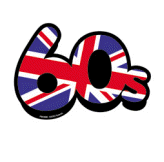
The influence of TV and movies Elvis was making lots of movies as were the teen idols. No Oscars here - some of them were pretty bad, but they were great marketing tools to sell the music. There were many variety shows. The most important was The Ed Sullivan Show. Also Shindig!, Hullabaloo, Where the Action Is By far the most influential program for rock & roll was American Bandstand. | Dick Clark (1929-2012) Hosted American Bandstand from 1957-1987 Promoted rock & roll nationally The program's focus was music and dancing and was on every afternoon This program was a perfect venue for the dance crazes | 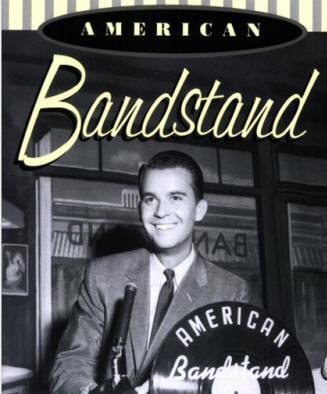
|
Dance Crazes They began with "The Twist" by Chubby Checker in 1960. watch His name was really Ernest Evans, but they sort of copied "Fats Domino" by calling him "Chubby Checker" - get it??  Also, the Pony, the Mashed Potatoes, the Loco-Motion, the Freddie, the Monkey, the Swim, the Jerk . . . . you get the idea. Here are some examples Fast forward about a third of the way past the lame introduction to see demonstrations of these and others Did you recognize some of those dances in the video? Also important was the influence of TV and movies. American Bandstand, hosted by Dick Clark 
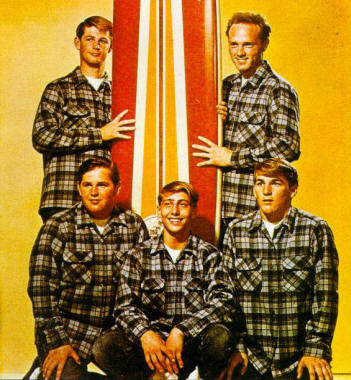 | The Beach Boys famous for their "Surfer Songs" The theme of their songs and the lyrics were not too memorable, the music itself was remarkably sophisticated. Brian Wilson experimented with new multi-track recording techniques to create a unique sound. Their singing style used tight falsetto harmonies that ventured well outside the standard "three chords" common to popular styles. "California Girls" listen "Wouldn't It Be Nice?" watch Another hit for The Beach Boys was "Surfin' USA"  Oops! - sounds a lot like Chuck Berry's "Sweet Little Sixteen" Oops! - sounds a lot like Chuck Berry's "Sweet Little Sixteen"
Chuck called them on it and got royalties from it from then on . . .  |
Speaking of recording innovations, Phil Spector was a record producer who was somewhat of a control freak. He used many studio instruments in his recordings, utilized reverb and echo effects, and controlled balance and blend factors to produce what came to be known as "the wall of sound." This was fitting a lot of instruments in an enclosed space in the studio, miking them all, then putting them all through the mixing board and blending everything into a rich sound. His sounded bigger than anyone else's sound at the time. This was his signature sound and influences studio production to this day. The record producer became an important component of the music industry and that certainly has not changed!
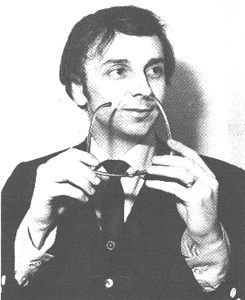 | Phil Spector (1940- ) |
Hard-driving rock had begun to lose popularity in the early 60's - more popular was soft rock like Bobby Darin, Neil Sedaka. Nice - but not too exciting. Meanwhile, upstart British bands had been listening to American R&B, blues, and skiffle. Skiffle was a British version of American jug band music. The most famous skiffle singer of the time was Lonnie Donegan. Here's an example: "Rock Island Line" listen This led to a craze for learning to strum guitar music. Guess who was learning to do that
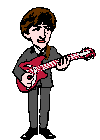 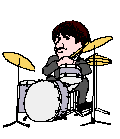 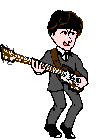 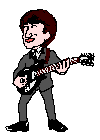
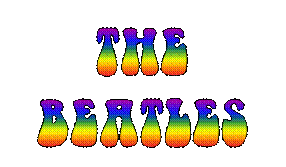 The Beatles' career as a group spanned the years between 1962-1970. Their first visit to America was in 1964. They took the U.S. by storm. Their music change a LOT during that time. They were so incredibly popular (Beatlemania) that they could experiment and innovate. They did not have to have a certain sound to sell records. The Beatles are the only group in history to have 20 songs reach #1 Paul McCartney and John Lennon also rank #1 and #2 as the songwriters with the most #1 hits. |  |
The Beatles' album, entitled The Beatles (1968) is number 9 in the top 10 best-selling albums in U.S. history It sold 19 million albums!$ By the end of the 60's, rock 'n' roll was THE most popular style of music, in no small part due to the phenomena of "The Fab Four" The Beatles John, Paul, George and Ringo They're not standing in that order, of course. That's just the order they're always listed! "I Want to Hold Your Hand" watch also some examples of Beatlemania ignore the subtitles :-) |  |
The other perspective of the British Invasion the anti-Beatles were the . . . 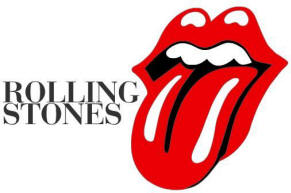
Why the anti-Beatles? Beatles | | Stones | cute | 
| not as | dressed up | 
| dressed sloppy | moppet hair | 
| longer hair | well-groomed | 
| uncombed | stood still | 
| ran all over | friendly | 
| aloof | | | |
The Rolling Stones fostered the image of contrast to the Beatles A parody of the Beatles' hit, "Let It Be," the Stones released "Let it Bleed" 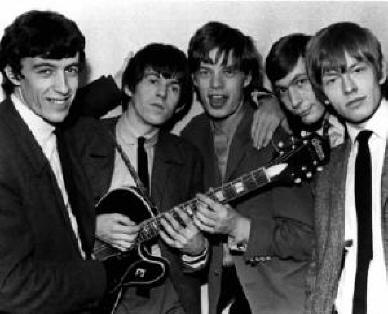 | The Rolling Stones "Satisfaction" watch "Satisfaction" watch 40 years later in 2008, they performed at the Super Bowl |
The Beatles and the Rolling Stones were only the most popular of many British groups that had significant success in America. Some of them are listed below.
Others included The Hollies, Freddie and the Dreamers, The Dave Clark Five, Chad and Jeremy, Peter and Gordon Georgie Fame and the Blue Flames, Graham Bond Organization, The Zombies, Zoot Money's Big Roll Band, Spencer Davis Group It was quite an invasion! 
Urban Folk Revival Folk music has been around since there have been folk! I guess you could say that it was popular with the folk, but until the days of the recording industry, it wasn't marketed and sold to speak of. Bob Dylan was the central figure in the transition from a traditional folk singer to a singer-songwriter. 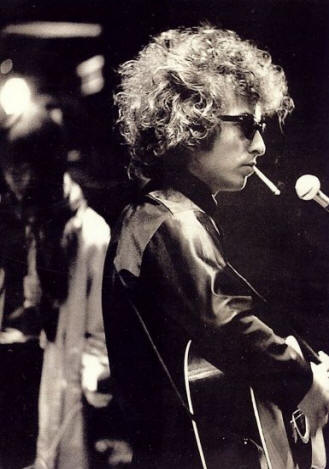 | Bob Dylan "Like a Rolling Stone" (1965) |
Folk singers were primarily about the words (the message). Amplification (electric guitars, etc.) was considered by the folk singers to be less serious and more of the teenie bopper style. Dylan Goes Electric The real trouble erupts when he shows up at the Newport Folk Festival in July 1965 and plugs in his guitar. He was booed. This was considered to be a sellout to folk traditionalists and had a very big impact . The profound rejection caused him to become increasingly angry with the traditional folk establishment Folk Rock was born! | | | | | | | | | | | | The Byrds "Mr. Tambourine Man" 1965 (written by Bob Dylan) "Turn, Turn, Turn" | 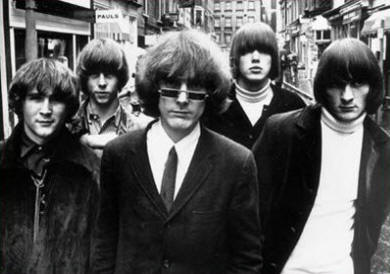 | | 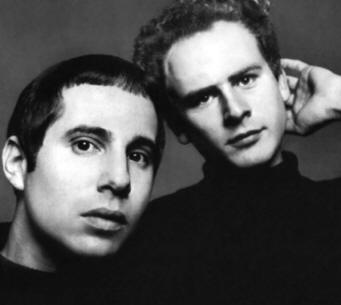 | Simon and Garfunkel "The Sounds of Silence" "I Am a Rock" | The Mamas & the Papas "California Dreamin'" "Monday, Monday" | 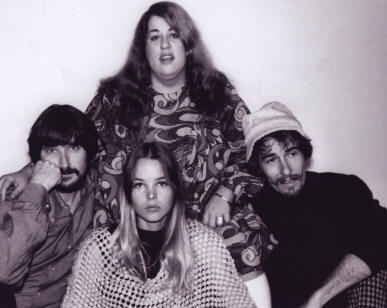
| | .gif) | The Turtles "Happy Together" | | | | | | |
TV Rock More TV influence (and it all started with Ricky Nelson) The Monkees The Archie Show: The Archies (animated show) music produced entirely by studio musicians ("Sugar, Sugar" 1969) The Partridge Family 
Psychedelic Rock Many changes were taking place in the popular culture of the 60's. The Baby Boomers were maturing past the teenie-bopper stage. There was much political unrest because of the war in Vietnam. Young people were very engaged in this political debate because their lives depended upon it - there was a draft, not a volunteer army.  | Vietnam era Draft Notice | 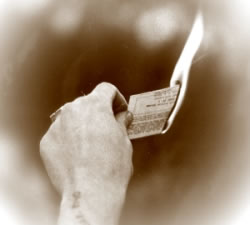
| a form of protest in the 60s was to burn your draft card | | |
The civil rights movement was galvanizing. There arose a "counterculture" that reacted to the mainstream that, in their perception, caused these political conundrums. The counterculture rejected "middle-class" values, governmental policies, and capitalism. They turned to communal living, hallucinogenic drugs, and free love. This group was relatively small, but influential in personifying this passive rebellion. They were called "hippies" and aspects of their philosophies, causes, beliefs, fashion, and of course, music had far-reaching influence | 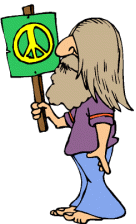
|
|
Popular music never exists in a vacuum, and in fact is an expression of its culture. 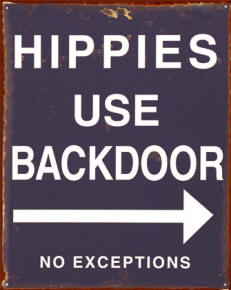
This was particularly true in the 60's. Some longer songs (less driven, more designed to put one into a frame of mind; related to concepts of drug experiences) were less applicable to the old AM radio format of 3 minutes. FM radio was a new format more accessible to improvisational and extended styles. So while AM listeners heard The Osmonds, David Cassidy (The Partridge Family), Bobby Sherman, The Jackson Five, etc. FM listeners enjoyed Psychedelic rock.
Jefferson Airplane lead singer, Grace Slick was the first "tough-image" female rock star "White Rabbit" listen Notice the drug references in the context of 'Alice in Wonderland' |  |
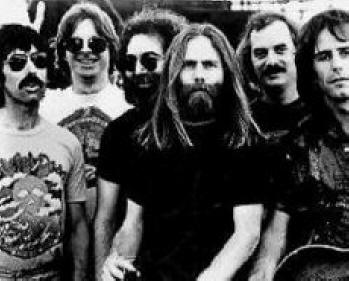 | The Grateful Dead a band with a unique sound, combining elements from several "roots" styles (Jerry Garcia was a former bluegrass banjo player!) Fans of the Grateful Dead followed (follow) the band from town to town attending every concert. Known as the "Deadheads," they are probably the most loyal fans of any group "Stuck in the Middle with You" listen |
The Doors from Southern California a more cynical, less Utopian-minded perspective "Light My Fire" listen (another example of extended length song) Jim Morrison was an unusual rocker in that he did not play any instrument. |  |
Jimi Hendrix was the most innovative and influential guitar player of the 60's and was a huge influence on the electric guitarists of rock music. Hendrix was left-handed, so he played his right-handed guitar upside down and restrung. He was a flamboyant showman and would play the guitar with his teeth, behind his back, and even set it on fire.
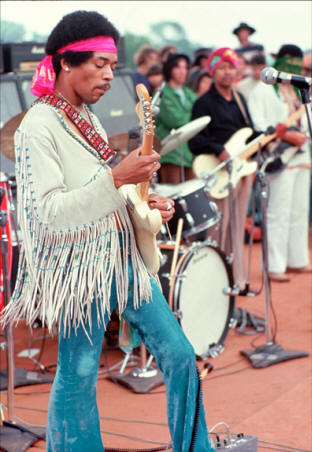 | Jimi Hendrix (1942-1970) "Purple Haze" listen "Star Spangled Banner" watch Then his thoughts in a subsequent interview watch | 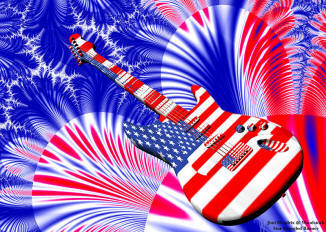 |
Janis Joplin (1943-1970) "Ball & Chain" listen "Summertime" watch Do you hear the multiphonics? (Multiphonics is when an instrument (or voice) that normally can produce only one note at a time, produces more than one.) Joplin also had a crossover hit on the pop charts "Me and Bobby McGee" listen It was (of course) her biggest hit and was released posthumously. | 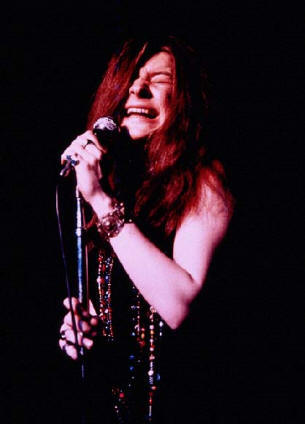 |
The quintessential statement and manifestation of the counterculture was a phenomenon called 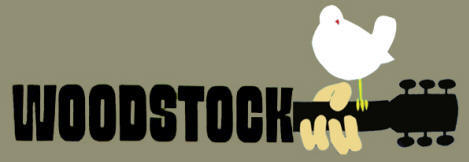
August 15-17, 1969 Woodstock was an outdoor music festival, like others that were popular at the time. It was held in New York State, near the town of Bethel. There were 31 acts booked to appear on the main stage The organizers originally expected 60,000 people Then 186,000 tickets were sold Over 400,000 showed up. | 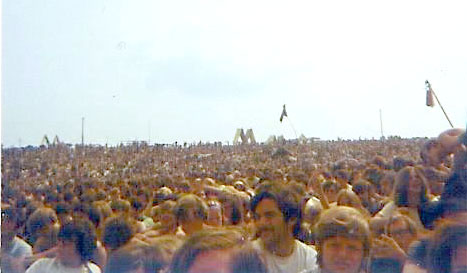 | 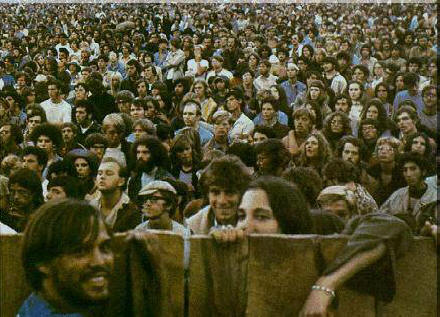 | 31 Acts were booked to appear on the main stage, Joan Baez , Arlo Guthrie, Tim Hardin, Incredible String Band, Ravi Shankar, Richie Havens, Sly and the Family Stone, Bert Sommer, Sweetwater, Quill, Canned Heat, Creedence Clearwater Revival, Jefferson Airplane, The Who, Grateful Dead, Keef Hartley Band, Blood, Sweat and Tears, Crosby, Stills & Nash (&Young), Santana, The Band, Ten Years After, Johnny Winter, Jimi Hendrix, Janis Joplin, Joe Cocker, Mountain, Melanie, Sha-Na-Na, John Sebastian, Country Joe and the Fish, Paul Butterfield Blues Band13 months later, Jimi Hendrix was dead 14 months later, Janis Joplin was dead woodstock.htm |
Jimi Hendrix, Janis Joplin, and Jim Morrison all died at age 27. Along with Brian Jones (of the Rolling Stones), Kurt Cobain (Nirvana) and others, the list is part of The 27 Club.
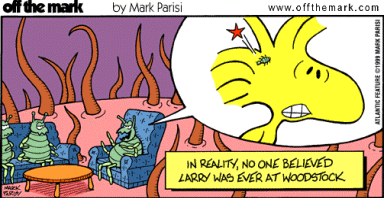
Hippie culture was brought into mainstream through the gathering of the young people at the festivals and the spread of rock radio on FM. The counter-culture was now pop culture Can I buy tie-dye at the mall? 

Created and maintained by Vicky V. Johnson |